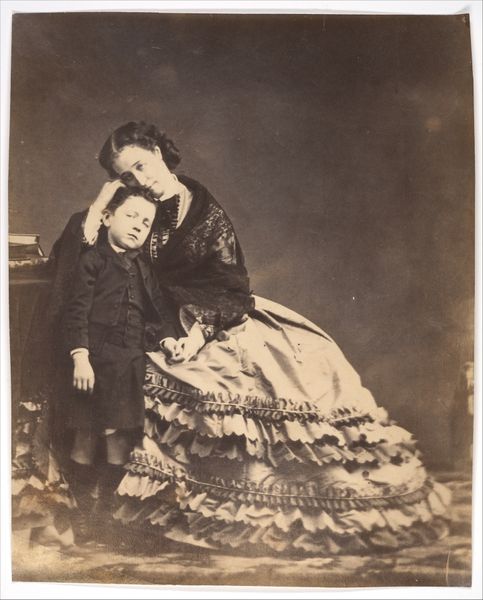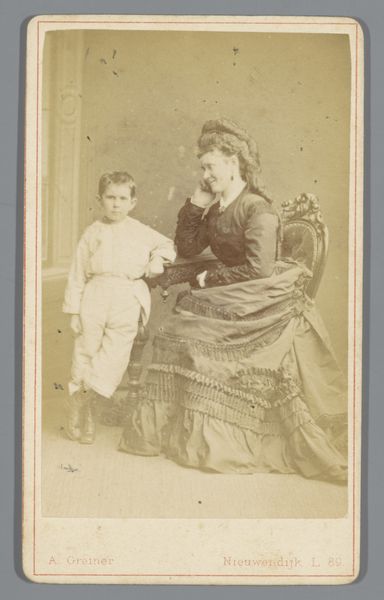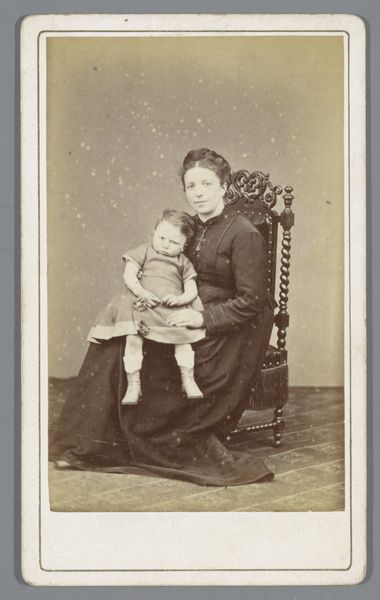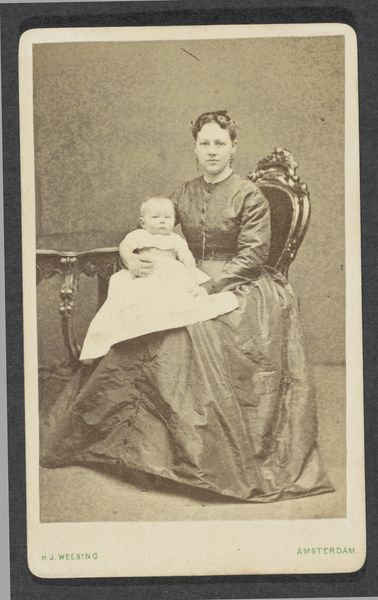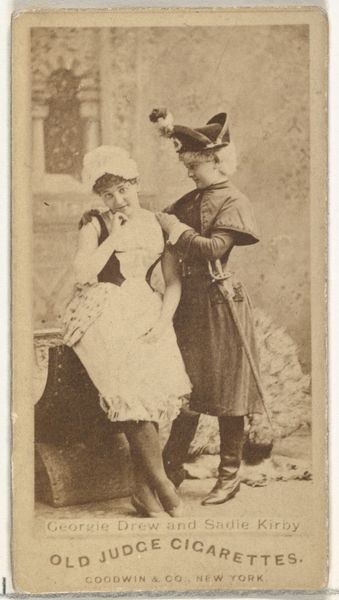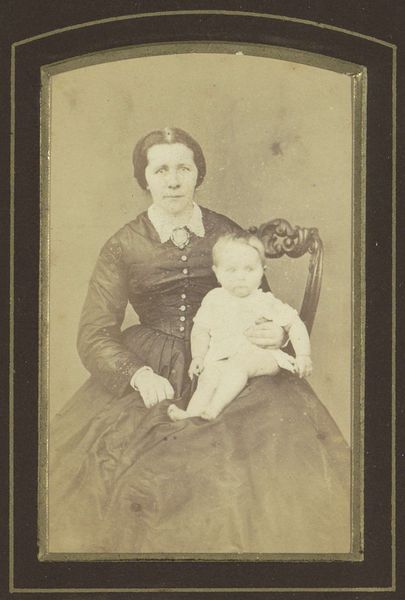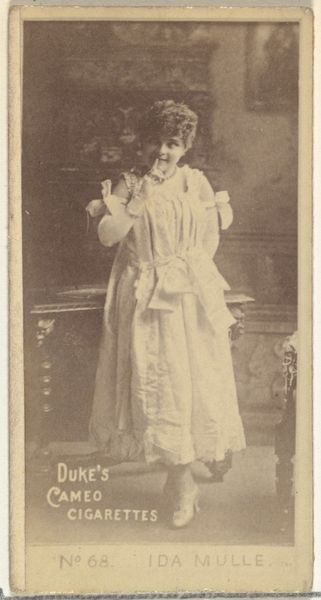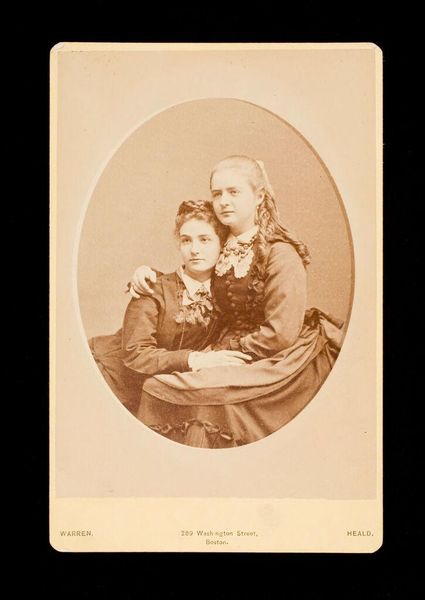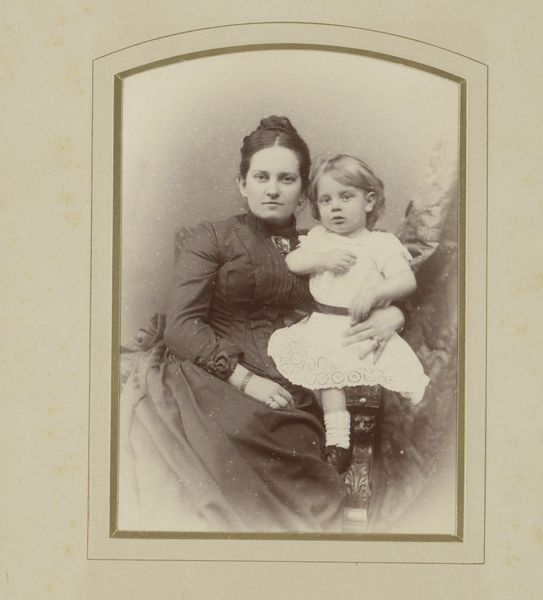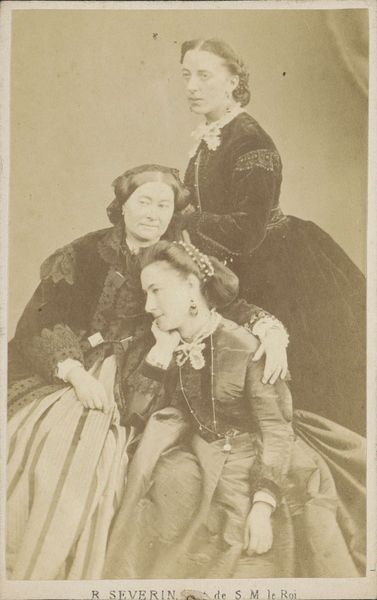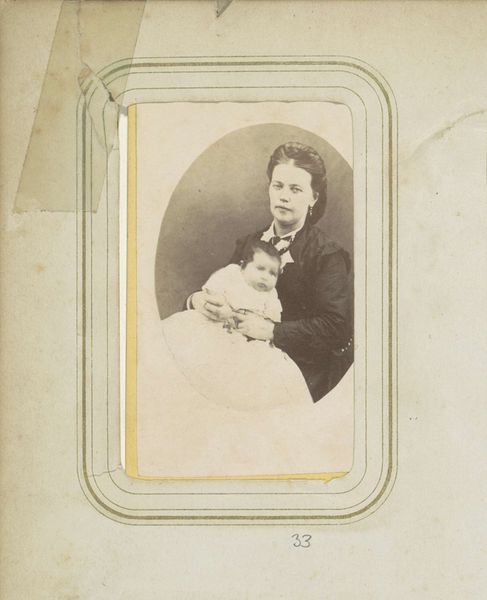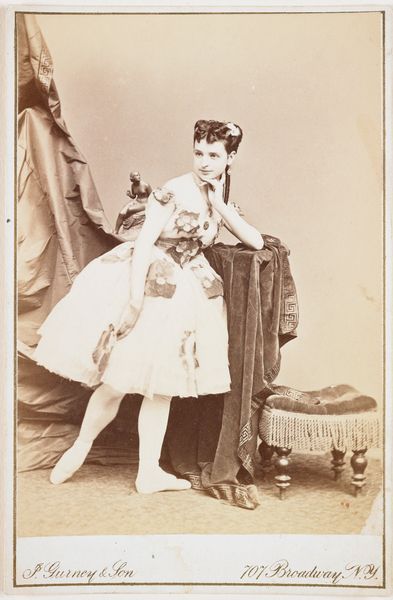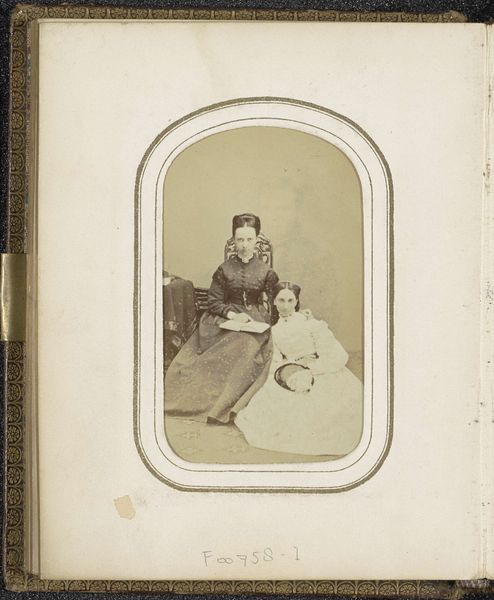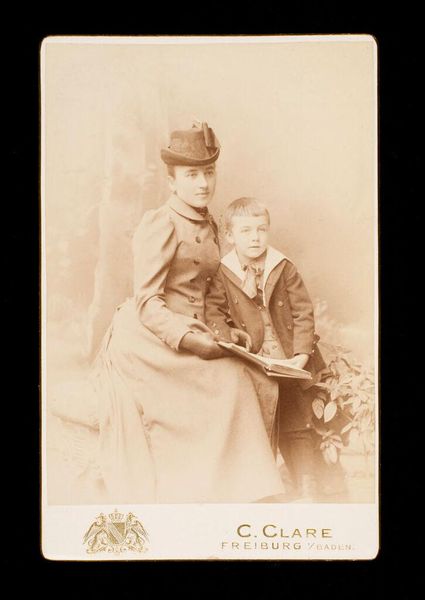
print, daguerreotype, photography, gelatin-silver-print
#
portrait
# print
#
daguerreotype
#
photography
#
historical photography
#
gelatin-silver-print
#
genre-painting
#
realism
Dimensions: height 165 mm, width 108 mm
Copyright: Rijks Museum: Open Domain
This photograph by Carel Eduard Westerborg captures a woman and child, and the story of its making is just as important as the sitters themselves. Photography in this era involved a complex interplay of chemistry and optics. The image was captured on a treated glass plate, itself a relatively recent industrial product. The resulting negative was then printed, likely using albumen paper, a process that relied on egg whites to bind the photographic chemicals. The sepia tones we see here are not just aesthetic; they're a direct result of the materials and processes used. This was not simply a matter of pointing and shooting, but rather a labor-intensive process, where the photographer had to master a complex technique in order to produce the desired image. By understanding the materiality and making of this photograph, we gain insight into the cultural values of the time. It challenges us to move beyond simply seeing the image, and to consider the work and social context embedded within its very creation.
Comments
No comments
Be the first to comment and join the conversation on the ultimate creative platform.
